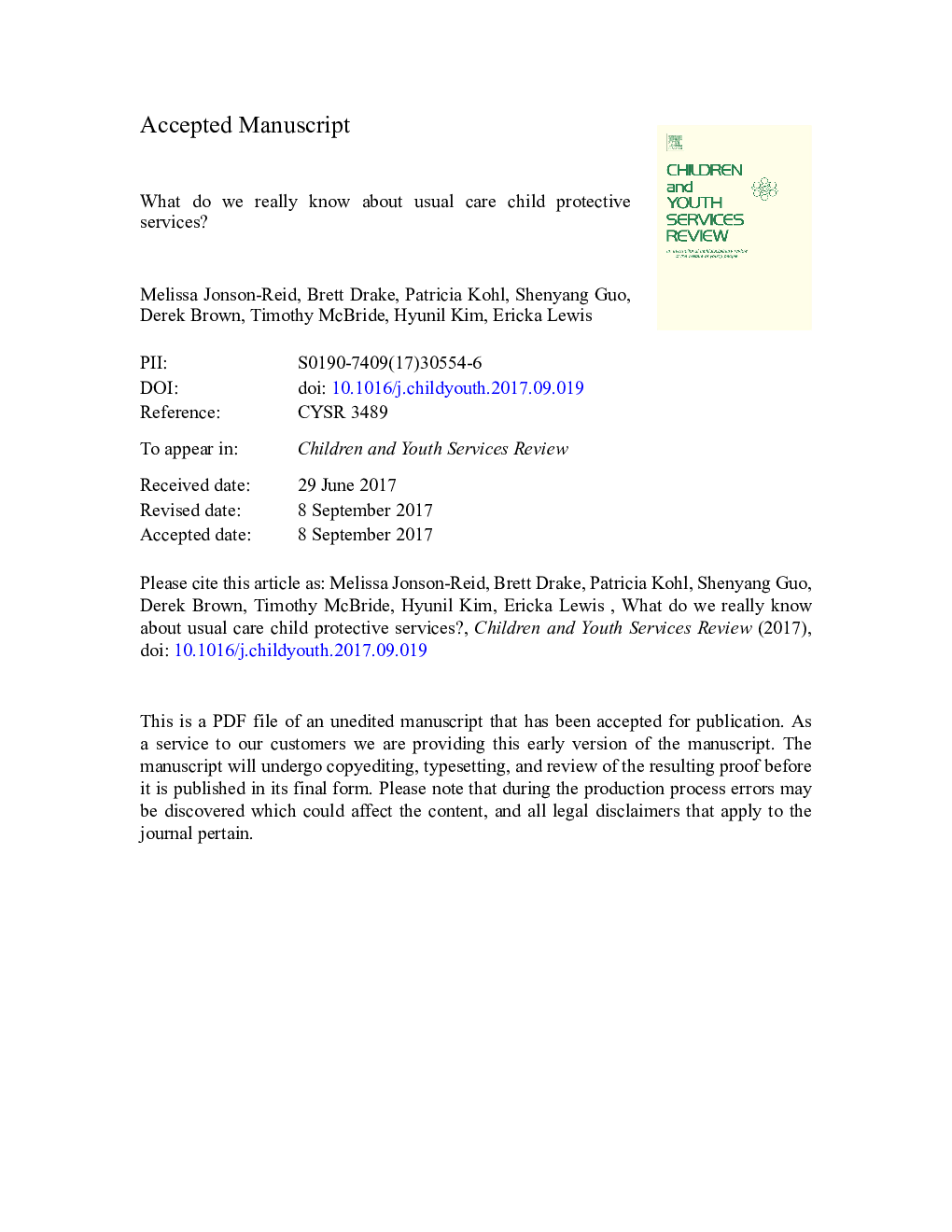| Article ID | Journal | Published Year | Pages | File Type |
|---|---|---|---|---|
| 4936194 | Children and Youth Services Review | 2017 | 37 Pages |
Abstract
The term “usual care” is often used in clinical research to refer to a comparison or control group that is receiving whatever normal services an organization may provide. In the US child protection system, “usual care” is the practice from the point of screening in a report, to assessment and possible in-home services or a decision to place a child in out of home care. Policy and practice variations across states and counties, as well as changes in policy over time, make research on normative child welfare practice services challenging but necessary. The service delivery mechanism in child protection is understudied, limiting our ability to inform decision-making at the local, state and federal levels. Gaps in knowledge also confound intervention research because a clear understanding of a given service platform is key when interpreting effect sizes against usual care controls. This article overviews what is known about “usual care” in child protective services and seeks to encourage more research in this area by reviewing six key factors related to measuring the impact of usual care from the point of initial report through the provision of services.
Keywords
Related Topics
Health Sciences
Medicine and Dentistry
Perinatology, Pediatrics and Child Health
Authors
Melissa Jonson-Reid, Brett Drake, Patricia Kohl, Shenyang Guo, Derek Brown, Timothy McBride, Hyunil Kim, Ericka Lewis,
